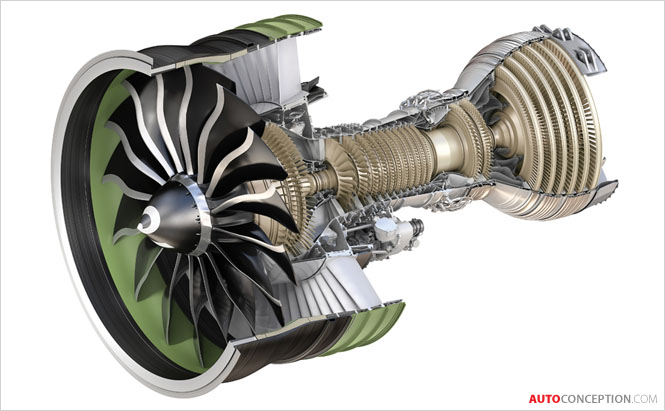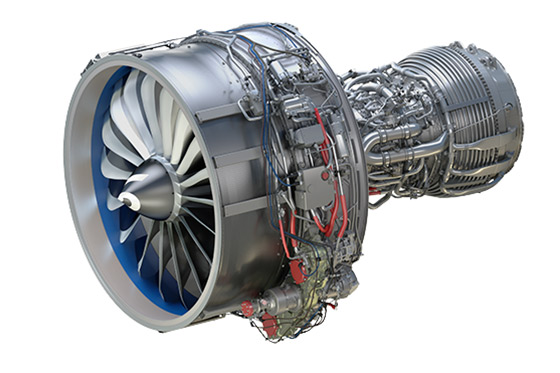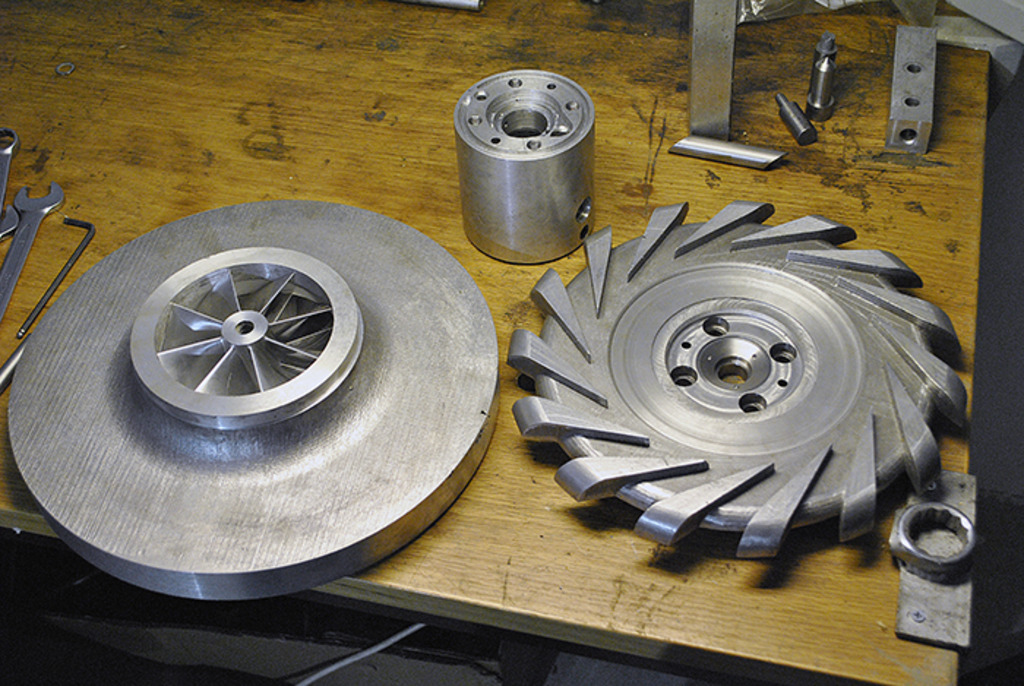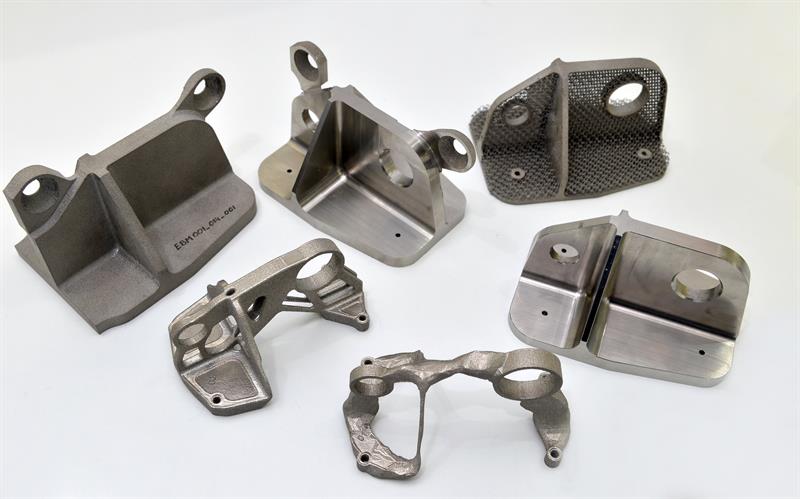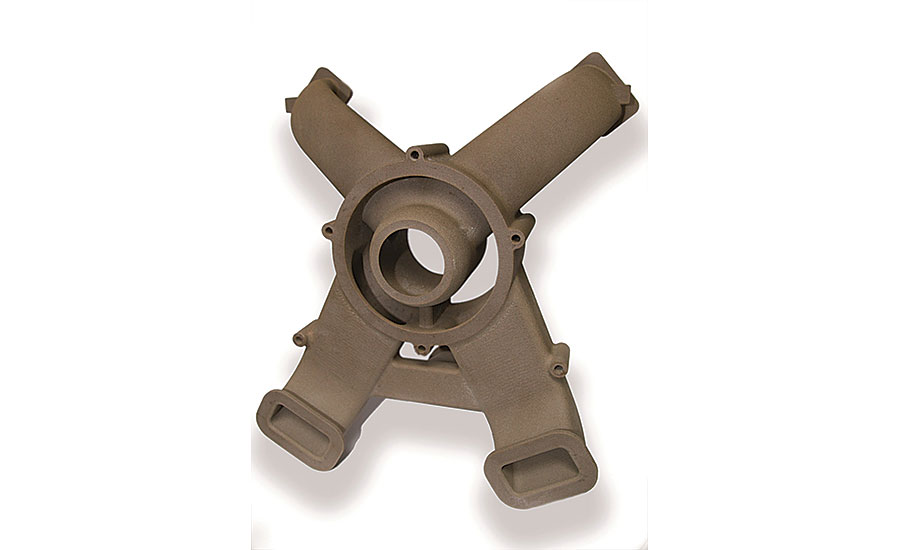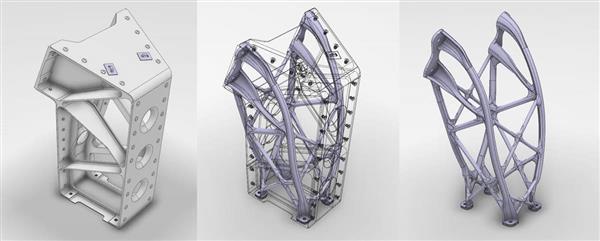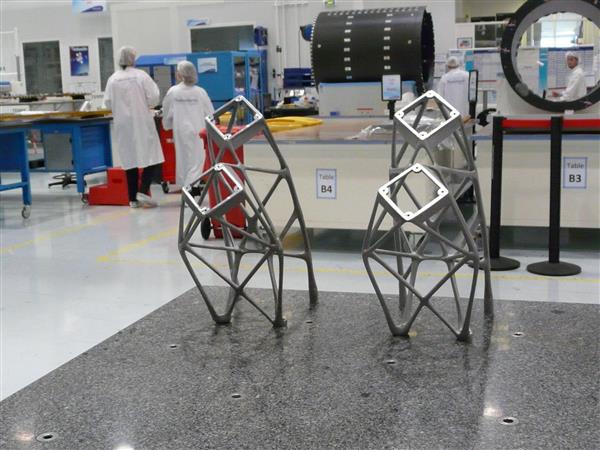3D Printing in Aerospace Industry
The aerospace industry is betting big on 3D printing technology, otherwise known as additive manufacturing. Industry giants like Lockheed Martin and Honeywell are incorporating additively manufactured components into their designs, and GE Aviation is investing $70 million in an Auburn, Alabama factory to make 3D printed fuel nozzles for its LEAP jet engine. What used to require welding together 20 parts now requires printing just one.
Aerospace engineers use Fused Deposition Modeling (FDM) Technology for prototyping, tooling and part manufacturing. FDM works with high-performance thermoplastics, including ULTEM 9085, to build jigs, fixtures, check gauges & end-use parts.
Replace Expensive CNC Production
By replacing expensive and lead-time critical CNC-milled parts with in-house manufactured plastic parts, you can dramatically reduce your production costs. The printed plastic parts also perform better technically, weigh less, and provide better electrical insulation.
Production Grade Materials
FDM machines work with production grade thermoplastics including ULTEM 9085, which provides an ideal solution for the manufacturing of component parts for aircraft, as it is lightweight and able to withstand intense heat (flame retardant).
Test and Identify Design Problems
In some cases using CAD models alone is not as effective at finding design problems as a 3D printed physical part – you can easily identify a component issue that may have been missed in the initial design stage.
Manufacturing 'game-changer'
The technology has not always lived up to sky-high hype, but leading manufacturers remain bullish over its potential to shake up the factory floor.
"It is something that is going to be a game-changer," said Teresa Finchamp, director of operations and quality in Boeing's department for new technologies.
Additive Manufacturing of Satellite Components
For many people, talking of the infinite vastness of the universe conjures up stories of science fiction, usually told by a Hollywood film studio. However, in real life, more than in any other area, it is arguably in space travel that a strong will and clear vision are vital for creating the necessary technology and readying it for deployment in the cosmos. This was the challenge faced by Swiss technology group RUAG in the construction of its Sentinel satellite, designed for observing our planet from on high. Even here, beyond the Earth's atmosphere, additive manufacturing is playing a key role.
Challenge
According to reports by the German Center for Aerospace (DLR) from 2016, the mission costs of space exploration per kilogram of transported payload are upwards of € 20,000. Every single gram saved reduces total launch costs, as the system requires less fuel for the ascent. As a result, aerospace engineers need to shave every possible gram from every component – as excess weigth accumulates rapidly. In this case, the Swiss RUAG group were in need of an optimally designed antenna bracket.
Engineers employ complex structures to identify a workable level compromise between form and weight. The RUAG team sought the optimum combination of strength and weight for the structure of its antenna bracket, as conventional manufacturing methods had been exhausted. Thankfully, additive manufacturing provided the perfect possibility of achieving the necessary freedom of design. Component testing represented a particular challenge, not least because of the aforementioned vibration. In outer space, reliability counts, as repairs generally not possible. This also explains why the authorization of such components is such a protracted and complex process. Every certification represents an accolade for the engineers who have achieved it.
Solution
In such cases, the complete production chain plays an important role, particularly in the aerospace sector. “Obviously, the immense advantages of producing components using additive manufacturing was of great interest to us," explained Franck Mouriaux, General Manager of Structures at RUAG. "For example, design freedom and complex components help us to save weight. The ability to integrate functions is also very helpful. In the end, however, it is a case of identifying these potential advantages, implementing them in an ideal fashion and acquiring the necessary the corresponding authorization. The simplest component serves no purpose if it cannot be used."
Fundamental suitability and rigidity testing formed the starting point of the antenna bracket's design. The next step comprised the selection of material, definition of processes and initial basic tests in respect of the material characteristics. The initial test structures then constructed, to serve as the starting point for the topological optimization of the component. RUAG was eventually able to achieve the – theoretically – perfect form for the antenna bracket, through a combination of intensive work with a CAD and FEM system from Altair and guidance from EOS on design and construction using additive manufacturing.
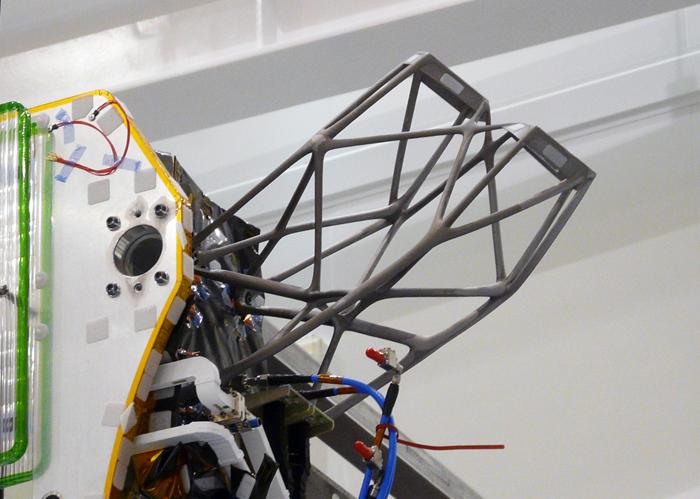
The approximately 40 cm long antenna bracket was produced by citim GmbH from Barleben in Germany using of the EOS M 400. With a construction volume of 400 x 400 x 400 mm, it was possible to produce two antennas, 30 tensile test pieces and various test items in a single construction order. The construction time was approximately 80 hours. The parameter set used was for a layer thickness of 60 µm, optimized for surface quality and productivity.
The aluminium alloy used, EOS Aluminium AlSi10Mg, is characterized by high strength and strong resistance to dynamic stress, making the material perfectly suited for use with high-stress components. Comprehensive tests were carried out to demonstrate the required characteristics – in the aerospace sector, these comprise up to 80% of the total scope of a project. Specially manufactured structures were used for testing. Among other things, engineers examined the brackets in computer tomographs. Various mechanical and physical procedures were also performed. At times, the stresses brought to bear on the component deliberately exceeded the load limits, ultimately leading to the destruction of the test pieces.
Result
The result of these efforts was that the new antenna bracket for the Sentinel satellites exceeded all expectations. The component was awarded certification and with that, the approval for its utilization in outer space. The achievement is all the more remarkable considering that the use of additive manufacturing in space is still in its infancy.

